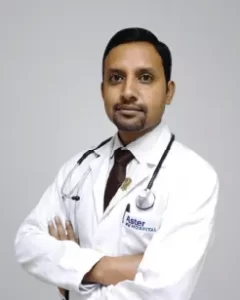

Dr. Vishal Rao, Regional Director – Head & Neck Surgical Oncology and Robotic Surgery, HCG Cancer Hospital Bengaluru
Secondhand smoking or passive smoking is the inhalation of a combined smoke from the burning end of a cigarette, as also the smoke exhaled by smokers. Secondhand smoke contains more than 7000 chemicals of which over several hundred are toxic and over 70 of them can cause cancer. Contrary to popular perception, there is no risk-free level of exposure to Second-Hand Smoke (SHS). The exposure to SHS is known to cause serious health problems among adults and children alike. Exposure of adults to SHS causes cardiovascular disease, coronary heart disease and lung cancer. Non-smokers exposed to SHS at home or at work increase their risk of developing heart disease by 25 – 30 percent and lung cancer by 20 – 30 percent.
Around 30.2 percent adults in India exposed to SHS at their workplace. Smoking is allowed inside the house in 48.8 percent of all households and 45.5 percent of non-smoker households. A little more than one-third of non-smokers (35%) and 38.7 percent of all adults are exposed to SHS in their homes. Prevalence of home SHS is obviously higher among females. One in four (25.7%) of all adults are exposed to SHS in public places. SHS can cause serious health problems in children. Studies show that older children whose parents smoke get sick more often. Their lungs are weaker compared to children who do not breathe SHS, and they are at higher risk of contracting bronchitis and pneumonia.
Sustained exposure to cigarette smoking is equivalent to smoking 2 cigarettes per day, and exposure is way higher at public places like hotels, clubs, bars or restaurants. Despite stringent efforts made by agencies across the country, an alarming 5500 new tobacco users are added every day in our country. The fundamental right guaranteed under Article 21 of Constitution of India, inter alia, provides that none shall be deprived of his life without due process of law. The word ‘life’ in Article 21 is very significant as it covers every facet of human existence, bringing within its fold the right to pollution-free, smoke-free air and the right to a clean environment.
Then why should non-smokers suffer the wrath caused by smokers? Why should non-smokers sustain the risk of acquiring lung cancer or heart disease only because they frequent public places? Does it not amount to an indirect threat to their lives without any process of law? However, no amount of legislation can guarantee a complete and effective protection to the consumers unless the consumer himself is prepared and willing to fight against the evil of consumer exploitation. Thus, the common people must become aware of their rights to a clean and healthy smoke free environment. There are three levels to a fully aware passive smoker:
- Awareness about passive smoking being injurious to health
- Awareness of specific diseases caused by passive smoking
- Awareness about consumer rights and how to exercise them
Mahatma Gandhi has aptly put it:
“The earth, the air, the land and the water are not an inheritance from our forefathers but on loan from our children. So, we have to handover to them at least as it was handed over to us.”
The onus is on us to protect our children from the health hazards of passive smoking. In fact, fresh air is not only a human need, but also integral to the wellbeing of all living beings. If we don’t act now, we might be indebted for the wrong reasons forever, and for generations to come.






